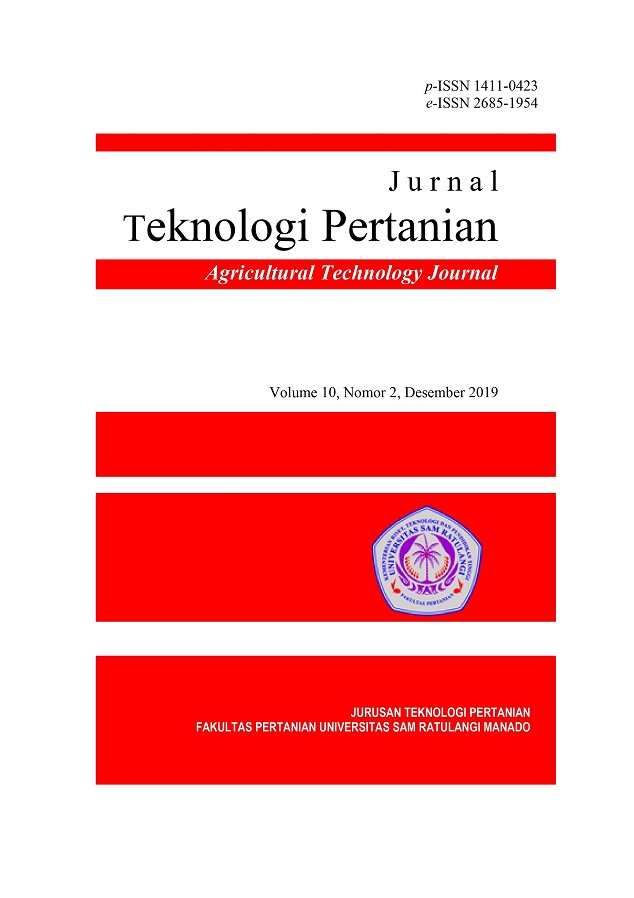SIFAT FISIK DAN ORGANOLEPTIK MIE DARI TEPUNG TALAS (Colocasia esculenta) DAN TERIGU DENGAN PENAMBAHAN SARI BAYAM MERAH (Amaranthus blitum)
DOI:
https://doi.org/10.35791/jteta.v10i2.29120Abstract
ABSTRACT
This study aims to evaluate the proportion of taro flour to produce the best noodles based on the physical characteristics and preferences by panelists. This study uses a completely randomized design with 4 treatments A (100% wheat flour) as a control, B (80% taro flour: 20% wheat flour), C (70% taro flour: 30% wheat flour), D (60% taro flour: 40% wheat flour). The parameters analyzed were water absorption, elasticity, cooking time, cooking loss, moisture content, antioxidant activity and acceptance level of the panelists. From the results of the research on testing the physical properties of taro noodles with water absorbency an average value of 90.40%, elasticity obtained an average value of 15.87%, cooking time obtained an average value of 210.67 seconds, cooking loss obtained value on average 21.37% and water content obtained an average value of 24.83%. Meanwhile, the antioxidant activity of taro noodles is classified as weak, namely the IC50 value is 225.82 µg / ml. For organoleptic tests, the average panelist gave likes value for color and neutral for smell, but they did not like the taste and texture of wet noodles made from taro flour with the addition of red spinach juice.
Keywords: Taro, red spinach, wet noodles


 Journal Template
Journal Template


